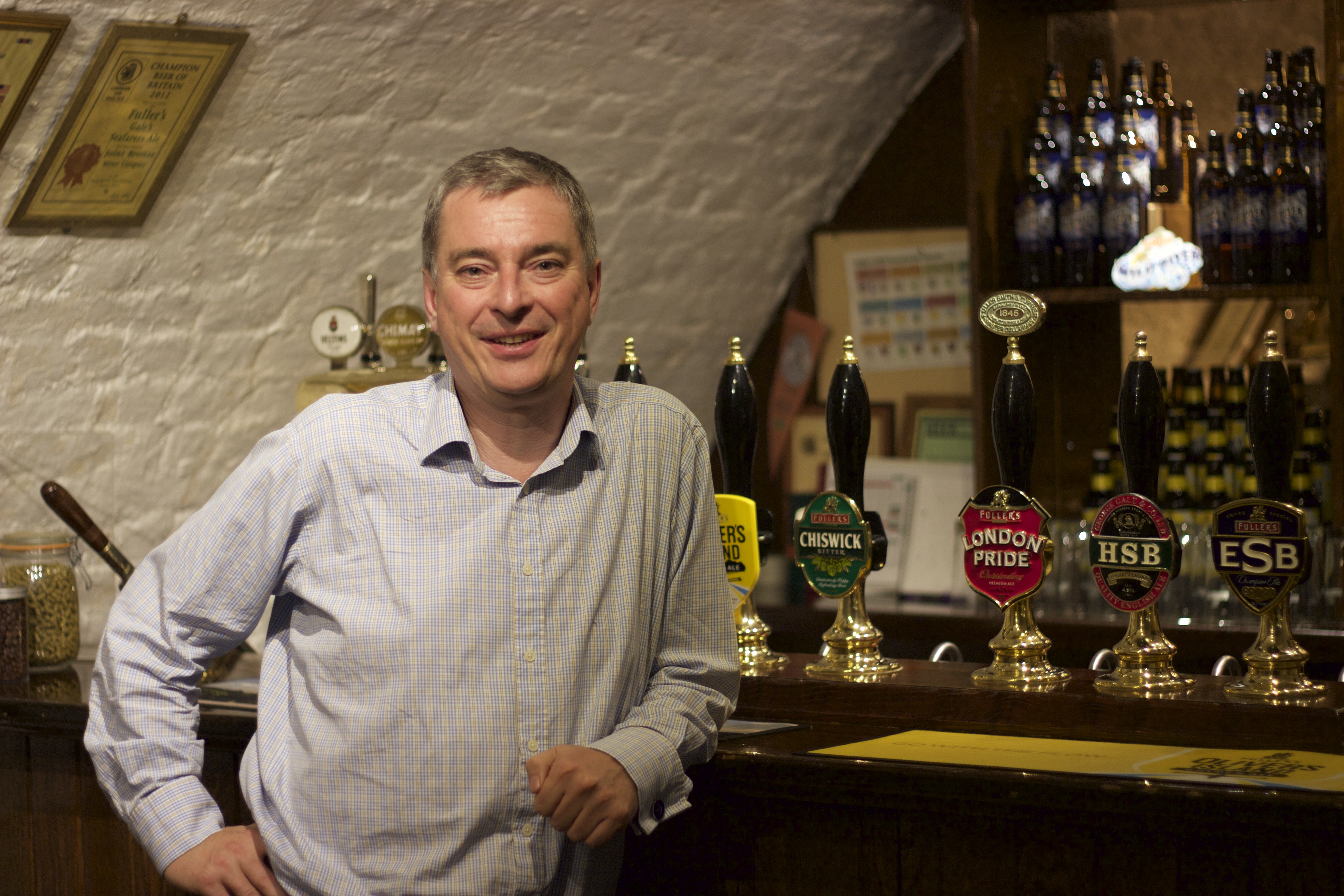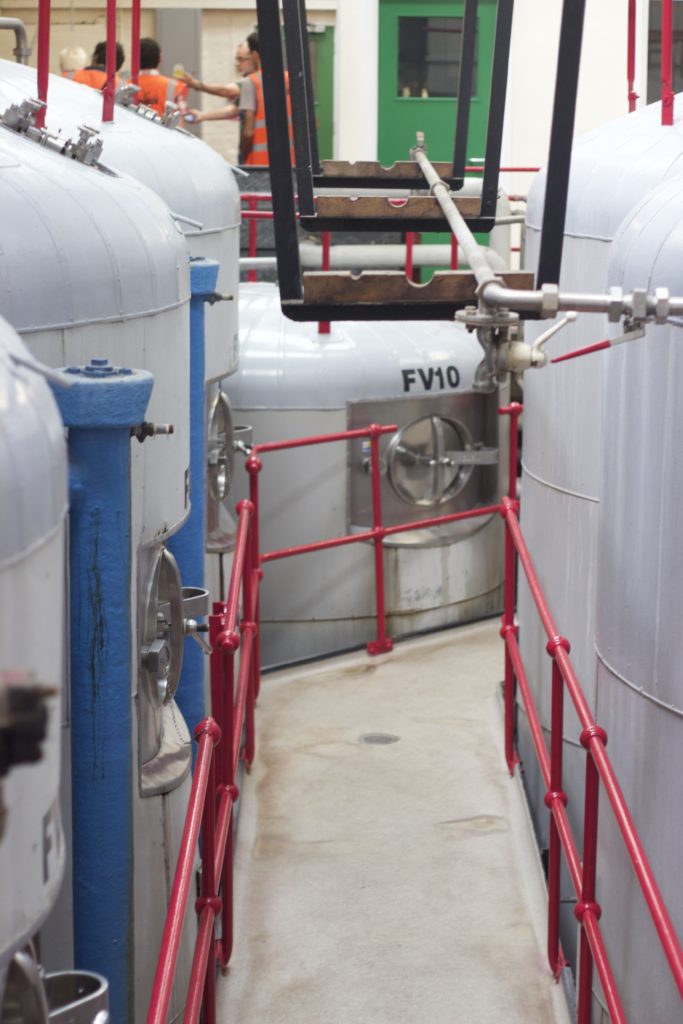
While Keeling would never openly criticise another brewery, or the beer they produce, his passion for what he considers good beer, especially cask beer, is unfaltering. He is aware of the limitations of cask, but is also keen to point out how people’s perceptions of what makes good beer, have changed .
He says: ”For a long time, the price and cost was the most important element in beer production. And an acceptable way of generating more money was to reduce your costs. So a beer that typically took five weeks to make, if you could make that in a week then great. People chose to judge a beer on clarity. But now, it’s different.
“Beer is now judged on flavour, with the scientific thinking focused on how we can keep the flavour, and keep the beer interesting. So, we have beers like our 1845, which is bottle conditioned, and we accept that the flavour will change, and change often, often for the better. Nature goes in cycles not in straight lines, which is why the beer also goes in cycles and not in straight lines.
“You could say that up till the so-called craft beer revolution, brewers were forcing the beer to do what they, actually maybe now they, but what the marketing or accounting team wanted it to do. And brewers were seen as subservient, a tool to deliver what they wanted back then.
It’s changed, you now accept the beer for what it is. They’ve had the shackles loosened and flavour is now king. Fuller’s has always realised that as things change, and if we are going to stay in brewing, you may as well be good at it.”
Need For Investment
Keeling points out the company’s acquisition of George Gale & Co in 2005, as an example of the need for investment and the challenges for staying good at what you do.
“When I joined in January 1981, that year we brewed just short of 70,000 barrels of beer and Gales brewed 43,000 barrels of beer. When we took them over, we were brewing 180,000 and they were brewing 20,000. While we were working out what we could do with them.
We took around their head brewer, pointing out that the mash tuns cost £2m and the coppers similar, and a new keg line that was £2.6m. He said that in his 25 years as a head brewer, he had never spent more than £25,000 on new equipment. And that shows the difference between the two, and that’s why we were successful and they went to the wall,” says Keeling.
He adds: “But they spent the money on pubs, and we got the pubs with the acquisition. We closed the brewery as we had the capacity to absorb the production of their beers. It’s interesting, looking back that we moved beers around as now it’s far more common, it wasn’t then.
“I was only taking the other day to our export manager. If we were to brew London Pride abroad, in the US or Australia. While there’s a few brewers there, that are interested in that and would treat it with care, I’m just not so sure. Two things occur to me.
Firstly, a big hoppy beer is easier to transport and to keep the flavours, but a more subtle one like London Pride, then it’s much harder to do that, so it comes back to what makes a great beer. You need quality and consistency, but at the same time you need flavour and character.”
According to Keeling, quality and consistency reassures the drinker, but then it’s the flavour that gives it the ability to satisfy and refresh, while the character keeps it interesting, making you want to drink it again. While the character comes from the people that make the beer and that’s what makes it difficult for Keeling as it won’t be the same people making the beer, his beer, if it was to take place away from Chiswick.
”If you have brewers you trust, their interpretation will be a good one but it’ll be another facet of the identity of the drink. If Michael Turner (Non-executive chairman of Fuller’s) came in tomorrow and said, ‘John we’re selling up and moving to Milton Keynes’, I’d tell him that would be a very bad idea. Because they could maybe pay me to go there, but not everyone else could co,” he says.
“It would take such a long time, and history is littered with people taking beer elsewhere and not making them the same. But money will always an influence in the end but take that away and it’s blooming hard to do it elsewhere. So look at if London Pride was brewed at Stone or Firestone Walker, who I respect and trust. But as you would not get the original London Pride, all you would get is a good impression of London Pride.”
1 comment on “Meet the Brewer: John Keeling, Fuller’s”
Comments are closed.


These ‘old’ systems rellay intrigue me. The ‘cleansing system’ being the oldest which was basically a single fermenter where the beer was cleared in the casks.The ‘dropping system’ is just a minor modification of the ‘skimming system.’ Both of these used two vessesl and then the cask. You could make much brighter beer this way.So to your question, Ron.What about the amount of yeast used per barrel? Same goes for the percentage of sugar?The AK states that it uses 57lb 1st crop. How does the X differ?I’d put dollars to doughnuts and bet it wasn’t anything like this. Im betting it was a function of two things. The ‘head’ and the temperature. 70F seems to be the magic number then. They wanted to wait until they got to the ‘yeasty’ head before they dropped the beers but temperature would regulate it most. These beers should have been cooler b/c it was March. In the summer Im betting they got them into the squares faster and jacked up the attemperators (sp?). When the beers started to look like they were almost complete the attemp were cranked to drop the beers down to 60 or low (winter). At this point they were very careful about skimming in that they wanted to ensure a small head was left on the beer to avoid aerial contamination. This is combined info from a bunch of 1880-1920 manuals. Lots of good stuff.